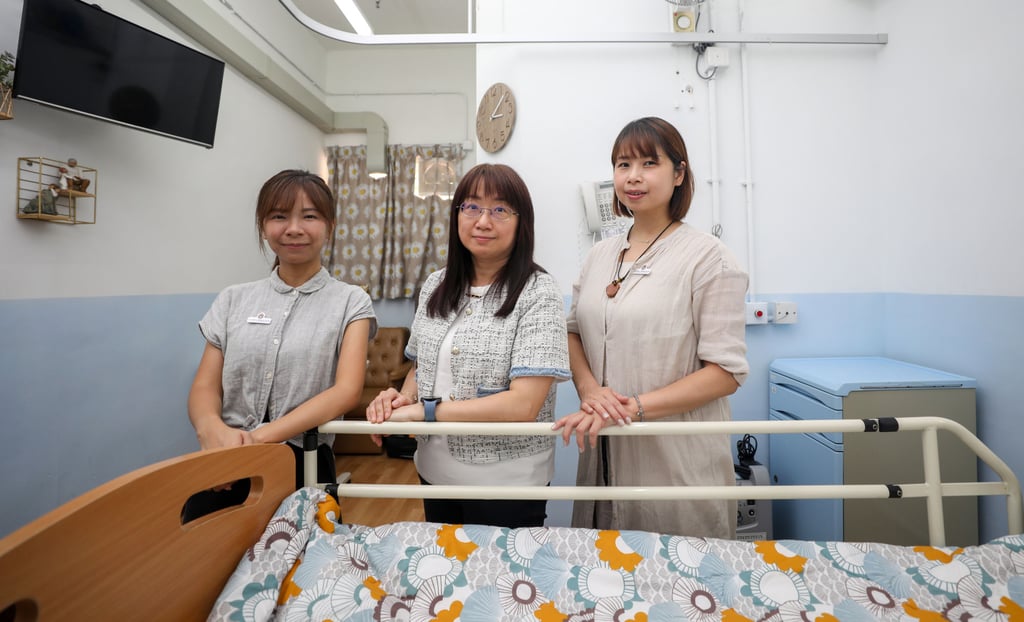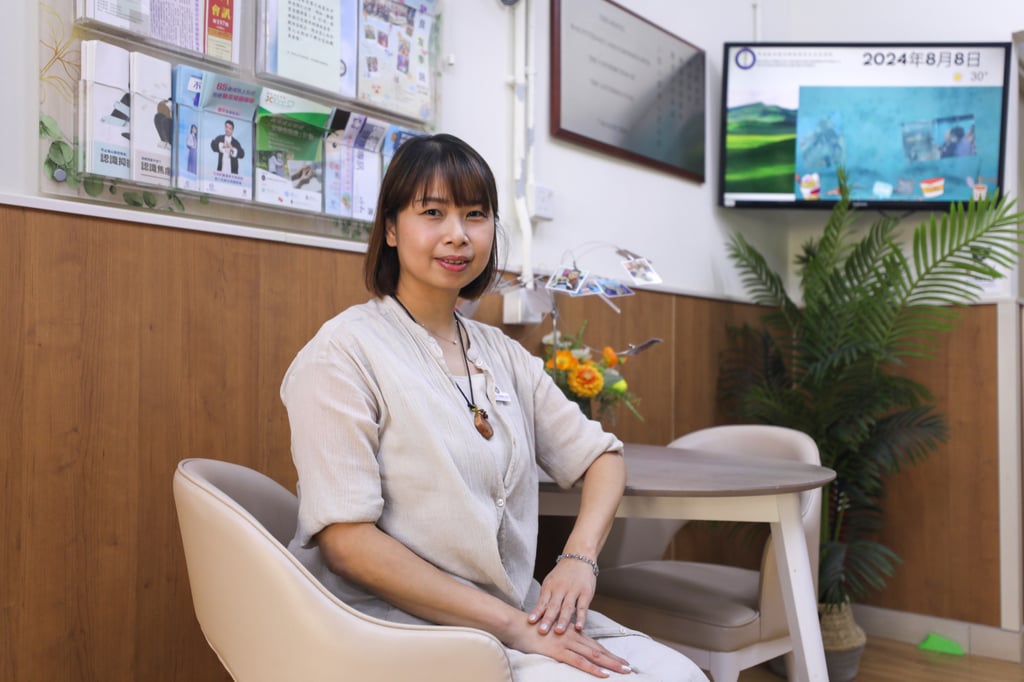Hong Kong’s care homes for elderly struggle to offer ‘dying-in-place’ services
“I hope my mum does not have to go through all this when her time arrives, and that I can stay with her throughout the process, though she isn’t yet comfortable with talking about death.”
The demand for “dying in place”, which means letting a patient spend their final days in familiar surroundings, has been growing among Hong Kong’s rapidly ageing population.
But most of the city’s 800 care homes for the elderly are not yet able to provide the option, despite a legal green light by the authorities in early June.
Some care home operators told the Post that they lacked the knowledge, skills and resources to implement dying-in-place services, and called on authorities to provide more support and public education to increase people’s acceptance of death in the community.
Hong Kong has more than care homes for the elderly with a combined capacity of about 80,000, with around 40 per cent subsidised by the Social Welfare Department.
Following a legal amendment on June 3, care homes were no longer required to report deaths to the Coroner’s Court if the person was terminally ill, treated by a doctor within the past 14 days and was certified to have died naturally.
In the past, only nursing and contract homes, which accounted for a small proportion, were allowed to arrange dying in place for their residents.
While authorities are not tracking the number of care home residents who have died under the new arrangement, an industry representative has told the Post that such cases are “extremely rare”.
An end-of-life care support project launched by the Jockey Club in 2016 has recorded two cases as of mid-August, out of 62 relevant facilities they were serving.
A question of how
Godfrey Ngai Shi-shing, chairman of the Elderly Services Association of Hong Kong, which has more than 400 members, acknowledged most care homes in the city did not know how to put dying in place into practice.
“It’s rare for elderly to have death plans in the first place … when doctors say they were near death or only had a certain amount of time left, they won’t be sent back to their care homes,” he said. “In most cases, we were simply following doctors’ instructions.”
Ngai said it would take little additional cost to meet the policy’s legal requirements, including finding a doctor to treat patients and certify deaths. The care homes could also use their isolation rooms for hospice purposes, he added.
But the industry needed more training and education to help elderly residents arrange their end-of-life plans, as well as further collaboration with hospitals to effectively implement such decisions, he said.

Consent and cost
Kiangsu Chekiang & Shanghai Residents (HK) Association Kwai Tsing Hostel for the Elderly was one of the pioneers in providing end-of-life services to their residents, boasting a team of trained staff and a hospice room.
Superintendent Sarah Ho Sze-lai of the association said the home was in talks with other members of the community about transporting arrangements for bodies, a subject matter some parties were uncomfortable discussing.
“We needed to talk to the district councillors, do some surveys to garner people’s views and public education … this may take some time, but we do not wish to pressure them too much,” she said.
Ho said any disruption would be limited because the care home was located on the ground floor of a public housing complex and did not need to share a lift with others when staff transported bodies.
But she called for more public education to change people’s perceptions about death in the community.
She also hoped authorities could roll out more subsidies to cover the cost of removing and storing bodies. Currently, only those on Comprehensive Social Security Assistance are subject to a burial grant of about HK$17,000 (US$2,180).
About 15 per cent of the care home’s residents were in the process of planning their deaths, including whether to receive resuscitation or be tube fed if they became incapacitated, since they joined the Jockey Club support project in 2021, she added.
Staff had also turned an isolation room into a hospice space for residents who were expected only to live another week and did need hospitalisation for symptom management, to allow them a chance to spend more time with their families.
Such residents would only be sent to hospital a day or two before they were expected to die or after all vital signs were lost.
The care home said four elderly residents had already benefited from the site’s hospice arrangements.

Medical support
Dr Edward Leung Man-fuk, president of the Hong Kong Association of Gerontology, which provides training for the support project, said care homes had to invest in increasing staffing to make dying in place possible.
He said that while each care home was staffed by nurses and had doctors visiting regularly, those nearing death needed much more intensive care if they chose not to be admitted to hospital.
As a result, they would need to hire a doctor to see the patient every day and a nurse to take care of him around the clock from the private sector, Leung added.
But he expected the cost to be manageable, explaining that a care home of 100 residents usually had 10 to 15 deaths a year, of which only half were predicted, and not all of them would opt to die at care homes.
Leung predicted that there would be about “three or four cases of such a year” for an average care home for the elderly.
The way forward?
Molly Chan Mo-ning, director of hospice care services at the Hong Kong Sheng Kung Hui Welfare Council, which helps 16 care homes deliver end-of-life services under the project, said she hoped authorities could consider adopting the support model they had set up.
Chan said one of the possible measures was for welfare authorities to set up end-of-life care support teams consisting of nurses and social workers at a district level to promote dying-in-place arrangements and to help people plan for their deaths.
“The provision of end-of-life care services would be more stable if it could become one of the licensing requirements of all care homes,” she said.
Gloria Chun Ka-ming, associate director of the project, said her organisation was in talks with welfare authorities over the continuation of the services after the 10-year project was set to wrap up by the end of next year.
“The response from the government has been positive in taking over the services but we are still discussing how to put it into practice, such as the service model, budget, the actual operation and manpower ratio.”
The Social Welfare Department said it had organised a briefing session in May to introduce a reference guide for the provision of end-of-life care services, and would continue to provide relevant training.